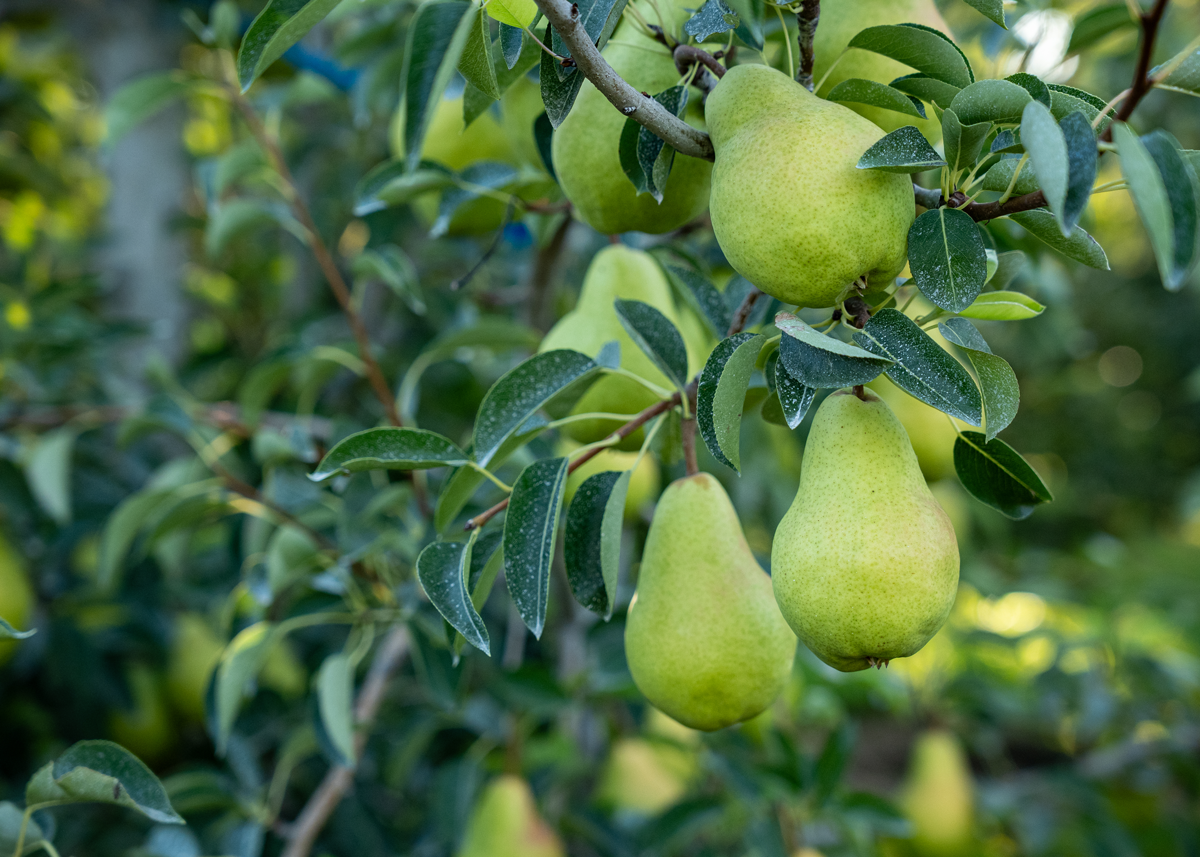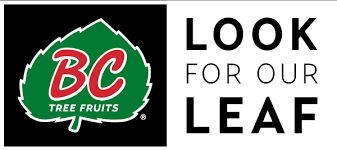As the first pears of the season come off the trees, growers and marketers say this year's crop looks to make a good rebound following a less-than-stellar 2024, when the yield was shortened by a cold snap in 2023. While some varieties may still have some lingering effects, overall the season looks to be a good one.
Kaci Komstadius, marketing manager for Wenatchee, Wash.-based grower-shipper CMI Orchards, expects to see production up about 80%.
“Conventional bosc pears will lead the surge, with volumes climbing around 200% year over year thanks to excellent bloom and fruit set,” she says. “Promotable volume is anticipated across all major varieties, setting the stage for strong retail programs throughout the season. Specialty pears will also shine: forelle and comice are expected to double, seckel to nearly triple, and Gem to rise 30%. Organics will see dramatic growth, with green anjou up 553% and red anjou up 198%.”
Season Preview
Marketers attribute the jump in volume to a strong growing season; ideal settings for bloom and pollination as well as a good growing environment into the summer have led to good condition and fruit finish.
“A milder winter supported a healthy dormancy period, leading to a favorable bloom and strong fruit set,” says Catherine Gipe-Stewart, director of marketing for Yakima, Wash.-based Domex Superfresh Growers. “Overall quality appears clean and well developed, with crop condition tracking positively.”
Sizing is yet to be determined for many pears as “pears typically gain substantial size in the final weeks before harvest,” Gipe-Stewart says.
Brianna Shales, marketing director for Wenatchee-based Stemilt Growers, says bartletts are still feeling the effects of last year's winter damage and might be on the smaller size.
“Fruit sizing is going to be a bit of a mixed bag, with early pears coming off the tree in smaller size profiles,” she says. “We're expecting anjou and bosc to have a range of sizes and excellent quality. I've heard the Hood River region has larger sizing, so between the Wenatchee/Entiat River Valleys and them, we should have plenty of pears to promote across all size ranges.”
But, Shales says, there's still a lot to be excited about.
“The quality is outstanding, with bosc standing out as some of the best fruit we've seen in years,” she says. “Color is great for all varieties, and the fruit is very clean. It's a complete turnaround from last season from a fruit finish standpoint and very marketable.”
And Gipe-Stewart says having good promotable volume is great for growers.
“Following a short crop last season, growers are eager for a return to full production, and labor crews are equally motivated, with strong domestic turnout and expectations for a productive, rewarding harvest,” Gipe-Stewart says.
Chuck Sinks, president of sales for Elgin, Minn.-based Honeybear Brands, says the key to a good year will be consistent shelf presence to rebuild momentum.
“While last year's short crop caused some supply disruptions, the industry has worked closely with retail partners to maintain relationships and reassure consumers,” he says. “Any lingering concerns are likely to fade as quality and availability stabilize.”

Challenges and Opportunities
As with other specialty crops, pear growers face rising labor costs and shortages, says Komstadius.
“Since pears are highly labor-intensive, ensuring adequate crews at the right time is critical,” she says.
Gipe-Stewart says while farming costs continue to increase, grower net returns have not.
“Farming costs have risen across the board, while the average price per box has dropped,” she says. “This makes every technology investment decision even more critical.”
Sink says export markets are a key opportunity for the industry to balance supply and support grower returns this year.
“Strong demand abroad helps relieve domestic pressure, especially when promotable volumes increase,” he says. “Pear Bureau Northwest and other industry groups are ramping up promotional efforts in key markets like Mexico, Canada and Southeast Asia.”
And, Gipe-Stewart says Latin, Central and South American markets will also play a key role for pear marketers.
“These are proven export markets for us, and through USA Pears, we have allocated strong promotional budgets to support them,” she says. “We are also exploring opportunities to reenter India and the Middle East, reintroducing our pears to those markets if pricing conditions are favorable. Any expansion into these regions will be approached with caution to ensure sustainable, profitable growth.”
Mexico and Canada are other important export destinations for U.S. pears, Shales says.
“Mexico can move great volumes, while Canada has a penchant for organic pears and is a large consumer of pears,” she says.
Variety Trends
Newcomer varieties such as Gem and Happi have started to gain interest in the marketplace. Marketers say what makes these unique is that both are truly seasonal varieties.
“Production is steadily increasing year over year, however, part of the appeal of this variety is its seasonality; it's only available for three to six months of the year while supplies last,” Komstadius says. “As an early-season pear, Gem offers retailers an exciting opportunity to capture consumer attention right out of the gate.”
Komastadius says Gem offers a sweet pear with a versatile eating experience — crisp when eaten right after purchasing, and it has a softer, juicer texture after a few days on the counter.
Shales says Happi will hit stores in mid-September, and it also offers a versatile eating experience.
“Its flavor profile is sweet with a bright and zesty bite that is maintained throughout its different stages of ripeness,” she says. “It does well at retail because it's robust enough to hold its quality throughout the supply chain while delivering a good eating experience.”
Stemilt plans to add more acres of Happi in the future, Shales says.
“We are confident in the eating quality and unique experience of Happi, so we are planting it at scale to bring this innovation into the top three pears at Stemilt in the future,” she says.
Sink calls the classic varieties “the backbone of the industry.” Marketers say each of these classic varieties — such as anjou, bosc, bartlett, starkrimson, red anjou and Asian pears — offer consumers a distinct eating experience.
“Each of these core varieties brings its own unique characteristics to the category, whether it's the juicy sweetness of the bartlett, the versatile flavor profile of the anjou, the firm texture of the bosc, or striking red color of the starkrimson,” Komastadius says.
Gipe-Stewart notes that pear variety development is different from other specialty crops.
“Pears are slow to change. Unlike apples, they do not frequently produce new sports or varieties. That is why bartlett and anjou remain the top two varieties, as they have been for centuries,” she says. “Pears are an artisan fruit, deeply rooted in tradition, with an ‘old world' character that continues to resonate with consumers.”

Building Consumer Demand
It's important for retailers and marketers to help make pears more accessible and appealing to consumers, especially to young shoppers and those with families, Komstadius says.
“Many shoppers aren't sure when pears are ready to eat, so we're working to simplify the message through engaging, educational content at the point of purchase and across digital platforms,” she says. “One of the biggest barriers to pear purchases continues to be consumer confusion about ripeness and readiness to eat. As an industry, we've made this a key focus by investing in education and engagement tools that simplify the pear story for shoppers.”
Shales says as part of that education, Stemilt has its RipeRite program, which she says will ensure pears are shipped with the right pressure for a ready-to-eat experience within a few days of purchase.
“It takes a great deal of planning and coordination to bring pears to retail that can be enjoyed soon after consumers take them home, but we see this as the way to win with the volume of pears this year,” she says. “We want to help in messaging about pear readiness with retailers but also feel part of the role is on us to deliver pears at pressures that will ripen within a few days of purchase, since that is when consumers want to eat them.”
It's also important to tap into the health benefits of pears through in-store messaging, Komstadius says.
“Partnering closely with retailers, we're creating in-store signage and digital campaigns that highlight the natural benefits of pears,” she says. “We're leaning into healthy messaging, reminding consumers that pears are an excellent source of fiber and a nutritious snack option for the whole family.”
And the health benefits of pears are a natural fit with current health trends. Gipe-Stewart says a medium-sized pear offers around 6 grams of dietary fiber, mostly found in the skin.
“A growing trend on social media, especially TikTok, is ‘fiber maxxing' — a focus on boosting daily fiber intake to support gut health, digestion and overall wellness,” Gipe-Stewart says. “The idea centers on nourishing a healthy gut microbiome and enjoying the many benefits that come with higher fiber consumption. While many people turn to supplements, mixes or powders to increase fiber, pears offer a fresh, whole food alternative that is both delicious and naturally nutrient-rich.”
Gipe-Stewart says spotlighting everyday value as a complement to the health benefits of pears is also a focus of promotions for Domex this year to snag younger consumers.
“Sales data indicate that while older consumers continue to purchase a few high-quality pears at premium retailers, the most significant growth opportunity lies in value-driven retailers,” she says. “Here, the least price-sensitive customers are driving bagged pear sales, purchasing more pears per trip, while more price-sensitive shoppers are sticking to buying a few loose pears less frequently, missing the opportunity of the convenience and value of bagged pears.”
Gipe-Stewart says shifting that perception of a pear from a luxury item to a staple will help boost consumption. She says younger shoppers have purchased pears in the past but need reengagement to buy again.
“To reengage these shoppers, the industry needs to continue promoting the health benefits of pears. Research shows that shoppers are most interested in pears' fiber and vitamin content,” she says. “Owning the pear health story will be essential — think more social media campaigns and in-store signage highlighting gut health and fiber benefits.”
Marketing and Promotion
Marketers say they'll put a lot of focus on promotions, packaging flexibility and marketing support to help grow demand. Komastadius says CMI plans to offer different packaging options to fit store formats and shopper preferences.
“This includes bulk displays, value-driven bagged programs and premium packaging formats that elevate presentation,” she says. “We are launching our Happy Bee Pears program, designed to create allure for younger generations with simple, fresh packaging updates, ripening guides and a suite of delicious recipes.”
Sink says retailers should consider digital promotions and themed displays to help drive in-store sales. He says cross-promotions always do well — think cheese, nuts or wine.
“Secondary displays outside the produce section, like near deli or bakery, even pharmacy, can be effective,” he says.
Shales says Stemilt plans multi-variety pear ads in peak buying times, such as the fall and winter and Thanksgiving and Christmas holidays.
“January will be a great opportunity to tie promotions back to health, as people tend to focus on this in the new year,” she says.
Shales says Stemilt also plans new merchandising materials with large display buildouts to catch the shopper's eye.
“Consistency in ripening is what delivers that great flavor experience and what helps drive repeat sales,” she says. “This is something we are going to be heavily focusing on internally at Stemilt.”
Gipe-Stewart says following last year's smaller crop, marketers have been concerned about losing shelf space to other fruits, so it's critical that pears have year-round shelf space.
“As USA Pear President CarrieAnn Arias continues to emphasize, maintaining year-round pear shelf space is critical, even if it means including imported pears or sourcing from domestic regional competitors,” she says. “This can be challenging for Pacific Northwest growers in a big crop year, when we need every bit of shelf space and promotional activity to move fruit. With this year's strong crop, we have more than enough pears to support domestic programs through the entire season, and we do not anticipate a need for imports next summer for conventional pears.”

















